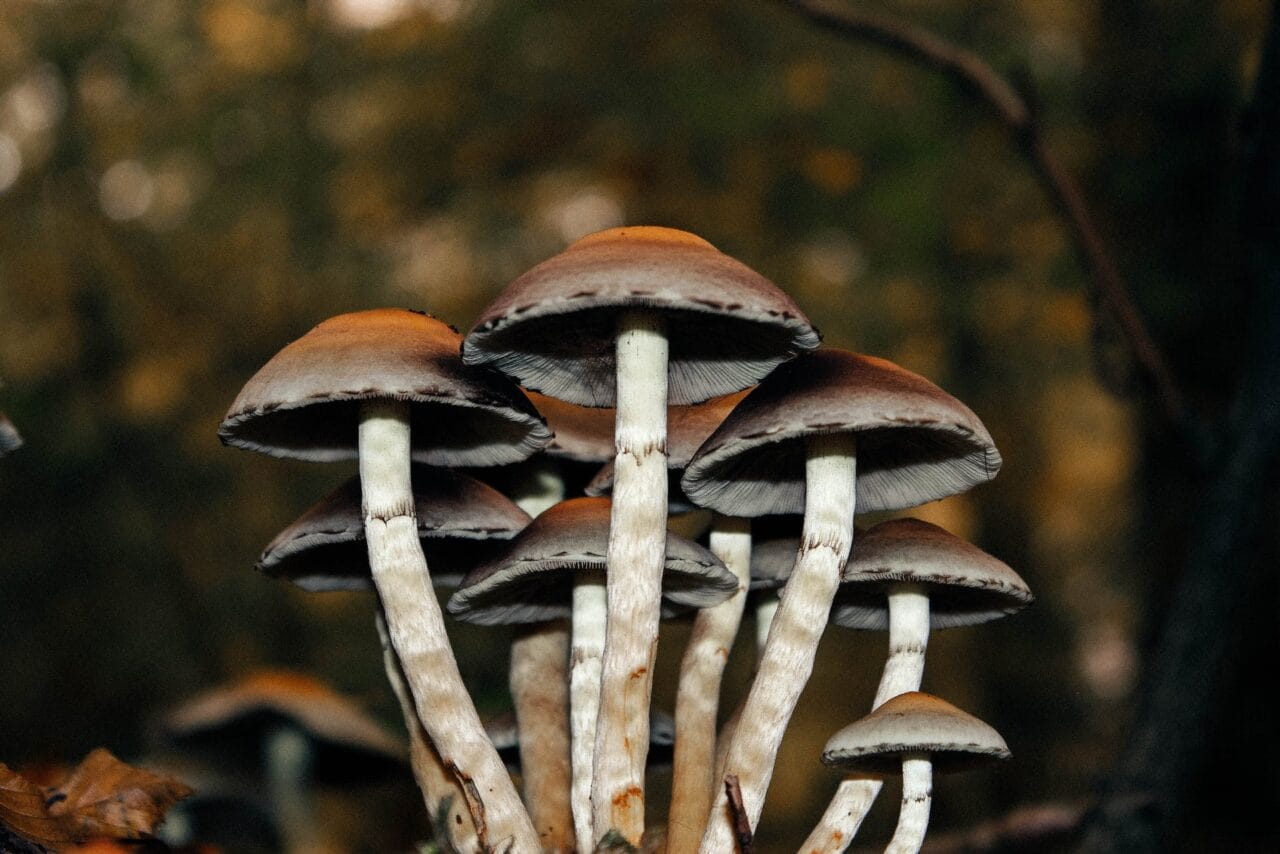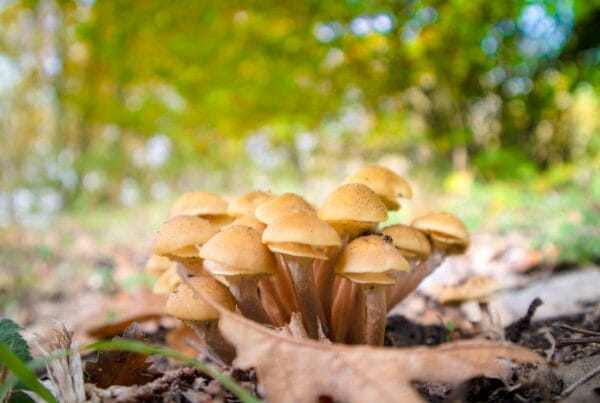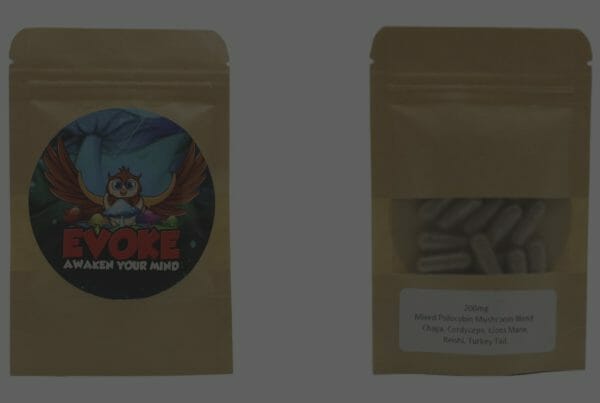Magic mushrooms contain psilocybin, a psychoactive compound used recreationally to induce hallucinations and euphoria.
Beyond its mind-altering effects, researchers have studied its benefits on chronic pain relief.
This article delves into a case study on how microdose mushrooms can help chronic pain.
Table of Contents
- Key Takeaways:
- The Study
- Three Cases, One Effect – Chronic Pain Relief
- How Can Psilocybin Manage Pain?
- Psilocybin Side Effects (Based on the Study) Vs. Traditional Pain Medications
- Psilocybin: Possible Future Studies
- Studies Limitation
- Microdosing with Shrooms
- Improving Pain with Psilocybin
- Frequently Asked Questions
Key Takeaways:
- Microdosing with mushrooms offers potential short-term and long-lasting pain relief.
- Microdosing with small amounts of psilocybin is generally free from side effects, in contrast to traditional pain medications.
- Psilocybin acts on the serotonin 2A (5-HT2A) receptors to help alleviate pain and address other conditions.

The Study
“Microdosing Psilocybin for Chronic Pain: A Case Series” is a study conducted by Dr. Matthew Lyes and his team. Dr. Lyes is affiliated with the Division of Pain Medicine in the Department of Anesthesiology at the University of California, San Diego. Their research focuses on three patients who self-administer small doses of psilocybin to alleviate chronic pain symptoms.
Three Cases, One Effect – Chronic Pain Relief
Patient # 1
| AGE/ SEX: | 37 M |
| PAIN TYPE: | Neuropathic pain occurs below the site of a spinal cord injury. |
| PAIN INTENSITY: | 4 to 5/ 10 but intensifies to 8/ 10 later on the day |
| PSILOCYBIN DOSAGE: | 250 mg ground mushroom for less than 6 months |
| EFFECT: | Stopped taking prescribed pain medication, stimulating muscle spasms, and improved efficacy of bowel movement. No rebound pain or withdrawal symptoms. |
| The patient stated that while his medications dulled the pain, the psilocybin muted it. It reduced his pain level from 5 to 0 on average. | |
Patient #2
| AGE/ SEX: | 69 F |
| PAIN TYPE: | Complex Regional Pain Syndrome (CRPS) |
| PAIN INTENSITY: | 5 to 7/ 10 but worsens with activity and during flares |
| PSILOCYBIN DOSAGE: | 500 mg daily (7 to 10 days) with rest days (2 to 3 days) over a year. Sometimes, take 750 mg to 1 gram for pain flares |
| EFFECT: | 80% pain relief lasting 3-4 hours, gradually returning to the baseline after 12 hours. For 90%-100% pain relief lasting 6-8 hours, returning to the baseline after 18 hours. |
| The patient reported reduced appetite without experiencing nausea. Disorientation or gait instability occurs when she takes a higher dosage (750 to 1000mg). | |
Patient # 3
| AGE/ SEX: | 40 F |
| PAIN TYPE: | Lumbar radiculopathy and neuropathic pain |
| PAIN INTENSITY: | 8/ 10 but increases to 10/ 10 when exerting |
| PSILOCYBIN DOSAGE: | 1000 mg mushroom chocolate bar every two months. |
| EFFECT: | Almost total alleviation of pain without psychotropic effects. Perceived increase in flexibility and functional capacity. Pain gradually returns to its initial level for 2-4 weeks. Repeated dosing leads to enhanced pain management. |
| The patient does not observe any discernible somatic, cognitive, or behavioural side effects and mentions that her mood remains largely unchanged. She has maintained a consistent dosage of her SSRI for managing depression throughout the psilocybin study period. | |
How Can Psilocybin Manage Pain?
The persistence of various somatic and visceral pain signals over time leads to the reinforcement of specific neural pathways due to peripheral and central sensitization. This culminates in the long-lasting physical and emotional experience of chronic pain. Psychedelics activate 5-HT2A receptors, potentially resetting brain areas related to neuropathic conditions.
One patient reported that the pain relief persisted for weeks. This suggests after direct stimulation of 5-HT2A receptors, there is a central regulation of pain perception and synaptic adaptability.
Psilocybin Side Effects (Based on the Study) Vs. Traditional Pain Medications
| PSILOCYBIN (Based on Study) | TRADITIONAL PAIN MEDICATION |
| Muscle spasms | Nausea |
| Diminished appetite | Stomach pain |
| Disorientation | Headache |
| Gait instability | Addiction |
| No impact on mood | Drowsiness |
Psilocybin: Possible Future Studies
Through an analysis of the experiences of three patients, the researchers have identified specific study aspects that merit further investigation, given their potential benefits.
- Microdoses of psilocybin may provide immediate and potentially lasting relief from neuropathic pain, all without the development of physical tolerance or dependence.
- Explore the impacts of different treatment approaches when used in conjunction with psilocybin. As an example, patient # 3 encountered a combined analgesic effect when combined with physical therapy.
- Microdosed psilocybin might offer pain relief even without psychotherapy in this case study. The researchers think the inclusion of therapeutic guidance could potentially enhance or extend the therapeutic effects.
Studies Limitation
While the outcomes observed in the patients are encouraging, it’s important to take into account the limitations identified in the study.
- The limited sample size is insufficient to represent all individuals experiencing neuropathic pain.
- The study did not recruit any subjects who did not respond to psilocybin.
- There were no assessments conducted before and after to examine the impact of psilocybin on psychiatric comorbidities such as depression and anxiety.
- Subjects themselves reported the majority of the information.
- The interviewer’s presence and potential stigma associated with psilocybin could have influenced how participants responded.
- The study did not determine the role of the placebo effect.
- The study did not measure the quantity of psilocybin in each mushroom.
Microdosing with Shrooms
In the study, patients ingested a microdose of psilocybin using dried mushrooms. Patients #1 and #2 consumed it in powdered form, while patient #3 incorporated it into chocolate. There are several products available for microdosing with psilocybin, and we have provided a list of some below.
Dried Mushrooms
While the study did not specify the strain used, you can consider the following strain as a suitable option for beginners.
- Golden Teacher: Among the most popular and frequently encountered strains of magic mushrooms.
- Amazonian Cubensis: Considered a user-friendly strain. It can provide cognitive advantages.
- Cambodian: Microdosing with Cambodian cubensis mushrooms is a technique that can boost concentration, elevate social awareness, and enhance mood.
Microdose Capsules
- Euphoria Psychedelics – Micro Calm Capsules: Indulge in this combination of Ashwagandha, Reishi, CBD, Valerian root, and Psilocybin Mushrooms, all backed by research for their effectiveness in alleviating anxiety and stress.
- Ground Sounds – Microdose Capsules – Champion Lover: This alluring blend offers a choice of three dosages: 50mg, 100mg, or 250mg of pure psilocybin combined with reishi, cacao, cordyceps, and maca.
- Kind Stranger – Brighten Capsules 250mg: it contains Golden Teacher strain that provides individuals with a feeling of lucidity, enhanced creativity, and sharpened focus.
Improving Pain with Psilocybin
While the available research on the pain-relief properties of mushrooms is somewhat limited, small-scale case studies and anecdotal accounts are instilling optimism.
These instances underscore the necessity for more extensive research into the potential advantages of psilocybin, especially in the context of chronic pain management.
While psilocybin’s widespread endorsement for pain relief might still be years away, the positive experiences described in the case study give hope to those with chronic pain.
Frequently Asked Questions
What are the effects of microdosing psilocybin?
One of the primary actions of psilocybin is to activate a serotonin receptor known as “5-HT2A” in the prefrontal cortex, yielding two significant outcomes:
- The generation of “Brain-Derived Neurotrophic Factor” (BDNF)
- Enhanced transmission of “Glutamate”
Psychedelics also promote interactions between less typical brain regions. This distinctive connectivity emerges as a result of psychedelics’ ability to diminish the activity of the “Default Mode Network” (DMN). The DMN is associated with various mental activities, including daydreaming, self-reflection, and contemplation of the past and future.
What is the most popular benefit of microdosing shrooms?
Microdosing has the potential to enhance mood, productivity, creativity, and concentration. Its most extensively researched benefit is its influence on mental health.
In November 2022, COMPASS Pathways, a mental health company, published the outcomes of their extensive phase 2b trial, a randomized and double-blind study. Their findings indicated that a single administration of psilocybin resulted in considerable reductions in depressive symptoms when compared to a placebo. Patients who received the higher dose of 25 milligrams showed a lasting antidepressant response when assessed at the twelve-week follow-up.
A study from the Psychiatry Research Journal observed psilocybin outperforms traditional antidepressant treatments.
How to determine your dosage?
Start with a 0.1-gram dose of psilocybin mushrooms on the first day. If you don’t experience your desired effects, you can incrementally increase your dosage by 0.05 grams on subsequent microdosing days until you reach your desired level.
Individuals who have a history of using psychotropic medications may need to adjust the dosage to 0.5 grams to experience the desired effects.
What to do before consuming shrooms?
- Allocate some time to understand the reasons behind your microdosing on a particular day.
- Set aside some time to sit and connect with your current state. Identify the emotion or mental state that you believe would benefit you on that day.
- Once your intentions are clear, write them down. It’s helpful to frame your intention as an affirmation to reinforce your ongoing progress.
- Focus your intention on the experience you want to have rather than what you wish to avoid.
- Take it on an empty stomach at least one hour before your first meal of the day.
How frequently can you consume a microdose of mushrooms?
Several established protocols provide structured microdosing regimens for psychedelics. These protocols specifically vary in the number of “off” days included, which are days when you abstain from microdosing.
The most advisable protocols incorporate 1-3 off days between microdoses. This aligns with natural tolerance mechanisms. The three protocols under consideration in this discussion include the Fadiman Protocol, the Stamets Stack, and intuitive microdosing.





